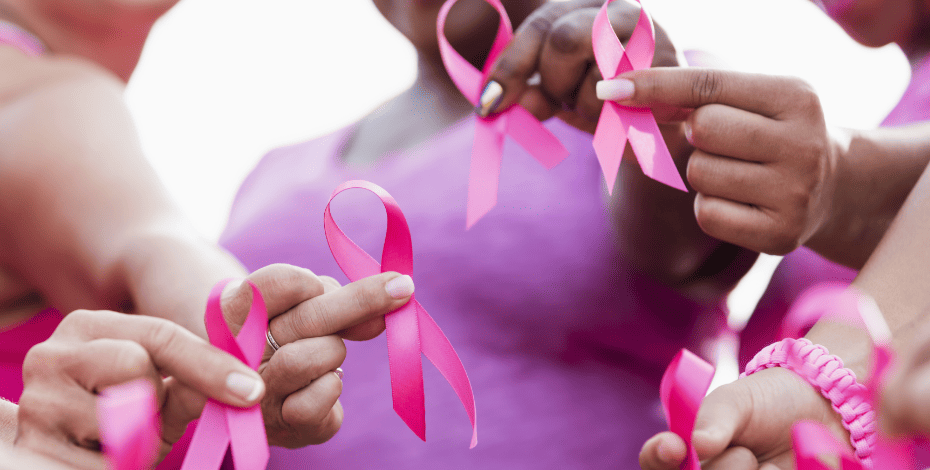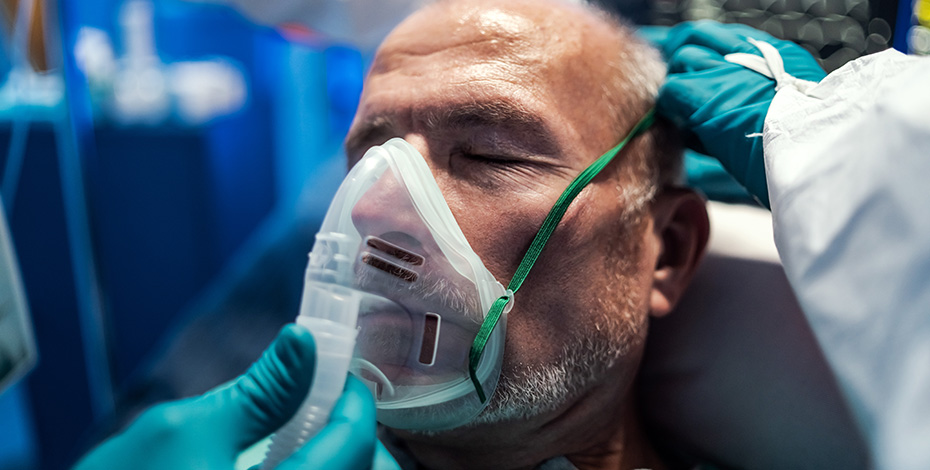
5 facts about ...post–intensive care syndrome

Simone Dafoe from the APA Cardiorespiratory national group presents five discussion points about post–intensive care syndrome and how physiotherapy can help mitigate its effects.
1. ICU survivors and their families face ongoing challenges
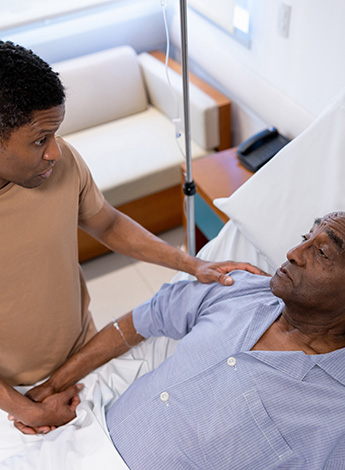
Survivors of critical illness often experience long-term physical and psychological effects, including ongoing disability.
As critical care medicine advances, it is increasingly likely that a patient will survive a critical illness in the ICU (Herridge & Azoulay 2023).
These advances in life-saving treatment have also created an iatrogenic state in which the manifestations of surviving critical illness are often the consequence of medical treatments rather than the initial pathology (Bemis-Dougherty & Smith 2013).
There is growing awareness of the long-term effects of emerging from a critical illness with ongoing disability (Herridge & Azoulay 2023) and a recognition that many patients live with post–intensive care syndrome (PICS) (Needham et al 2012).
PICS is characterised by a combination of new or worsening cognitive (Pandharipande et al 2013, Iwashyna et al 2010), functional (Herridge et al 2011) and psychological (Wade et al 2012) issues that persist following hospital discharge.
Family members also encounter psychological challenges, known as post–intensive care syndrome-family or PICS-F (Davidson et al 2012).
Emerging evidence in the literature shows that awareness of PICS and PICS-F is limited among many hospitalists and healthcare practitioners and that its management is poorly understood (Kahn et al 2007).
Physiotherapists practising outside the ICU should be aware of the consequences of PICS so that ICU survivors in hospitals, rehabilitation centres and outpatient clinics with deterioration of physical, cognitive and mental abilities are diagnosed early and accurately and receive appropriate services (Needham et al 2012).
2. Symptoms of PICS include muscle loss, weakness and higher mortality

It can take more than a year to rebuild muscle mass lost during an ICU stay.
Despite what we try to do in the ICU with early mobilisation and liberating patients from ventilation, ICU-acquired weakness is prevalent among ICU survivors (Denehy et al 2017).
Common physical symptoms include critical illness myopathy, joint stiffness and fatigue.
Muscle wasting occurs early and rapidly during the first week of critical illness and is more severe in those with multiple organ failure (Puthucheary et al 2013).
Patients can lose up to 40 per cent of their muscle mass during an ICU stay, with potentially significant effects on their long-term function and physical capacity (Griffiths & Jones 1999).
Rebuilding this much muscle can take over a year (Griffiths & Jones 1999).
Patients may have difficulty with activities such as climbing stairs, getting out of the bath, turning off taps, driving a car or returning to work.
This can then contribute to a fear of falling and increase their chance of hospital readmission (Griffiths & Jones 1999).
ICU-acquired weakness has been associated with higher one-year mortality (Hermans et al 2014) and skeletal muscle weakness at discharge was independently associated with worse five-year survival (Dinglas et al 2017).
This finding was consistent regardless of whether muscle weakness persisted or resolved in the post-ICU period.
3. Immobility in the ICU is harmful
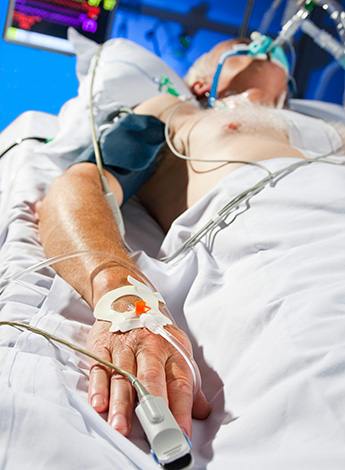
The detrimental effects of immobility in the ICU are significant and early mobilisation should be encouraged.
Immobility is common in the ICU and is largely due to sedation practices, which are often essential when patients are critically unwell.
One way of managing this is to encourage early mobilisation, which has been shown to be safe and feasible (Stiller 2013).
However, there is still conflicting evidence when it comes to dose, duration and timing.
Along with the detrimental effects of muscle wasting, other factors contribute to poorer outcomes for our patients due to immobility and the sequelae of an ICU admission.
Labeau et al (2021) reported in an international point prevalence study that ICU-acquired pressure injuries are common and that those who develop them have poorer outcomes, making it all the more important that our patients are regularly mobilised.
Another issue is that patients with challenging behaviours in the ICU are often physically restrained.
Nursing and allied health involvement is likely to be effective in reducing rates of physical restraint (Franks et al 2021).
While early rehabilitation has a number of benefits in the short term, including an increase in muscle strength and a reduced incidence of ICU-acquired weakness, it does not affect the long-term outcomes of PICS as measured by health questionnaires EQ-5D and SF-36 (physical functioning) (Fuke et al 2018).
When patients have survived a critical illness, we need to consider not just what happens in the ICU, but what happens afterwards and across the continuum of care.
4. Surviving ICU has a significant psychological impact
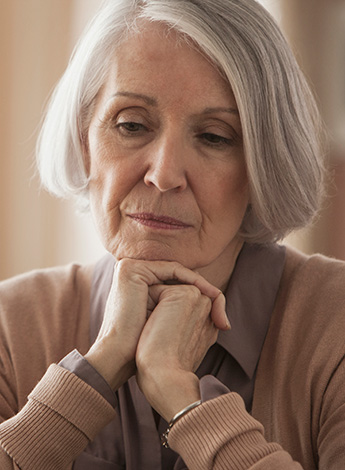
ICU survivors have higher rates of psychological, cognitive and executive functioning difficulties.
It is well established that PICS affects a patient’s psychological function.
Patients with PICS have been shown to have higher levels of anxiety, depression and post-traumatic stress disorder symptoms (Wade et al 2012).
Relatives are also affected, with an incidence of 15–24 per cent anxiety, 4.7–36.4 per cent depression and 35–57.1 per cent post-traumatic stress disorder symptoms (van Beusekom et al 2016).
In addition, one-year cognitive outcomes among ICU survivors are similar in severity to mild Alzheimer’s-type dementia or moderate traumatic brain injury, independent of age (Pandharipande et al 2013).
Alongside psychological difficulties, the BRAIN-ICU study underlines the ongoing cognitive and higher level executive functioning challenges faced by a large proportion of our patients in their post-ICU lives.
Only 20 per cent of patients who survive chronic critical illness will return home; the majority will be discharged to skilled nursing facilities with incurred costs in the billions (Kahn et al 2015).
Optimisation of function is crucial, along with an understanding of the ongoing challenges that our patients and their families experience.
5. Physiotherapists can help with follow-up for PICS patients

Patients with PICS need consistent follow-up, peer support and physical activity.
There are currently no clear guidelines on how patients with PICS should be routinely followed up.
It largely falls to GPs, who may have little understanding of the condition.
There is increasing interest in using peer support for survivors of critical illness and the Society of Critical Care Medicine has been promoting the THRIVE program in order to build an international network of peer support groups.
While the evidence is currently limited, peer support appears to reduce psychological morbidity and to increase social support (Haines et al 2018).
It is believed that through interactions with others who have had a similar experience, the normalisation of beliefs and feelings will aid recovery (Mikkelsen et al 2016).
There is a consistently unmet need in this area that may affect the health of patients and caregivers (Sevin et al 2021).
In all populations, physical activity has well-known benefits.
Survivors of an ICU admission longer than five days have demonstrated high levels of inactivity for prolonged periods at two months after hospital discharge (Denehy et al 2012).
The majority of these patients did not meet recommendations regarding levels of physical activity.
Physical inactivity also imposes a significant economic burden that cannot be ignored (Ding et al 2016).
When this is considered in combination with the economic burden of surviving critical illness and the long-term physical, cognitive and psychological effects of PICS, it is clear that physiotherapy management of this condition can make a significant difference.
Click here for an infographic poster version of this article.
>> Simone Dafoe APAM is the Principal Physiotherapist ICU and Surgery at the Royal Adelaide Hospital, where she coordinates an ICU peer support group for patients and families, Survive and Thrive. Simone is a member of the APA Cardiorespiratory national group and has a special interest in long-stay ICU patients and patients with tracheostomy.
- References
-
1. Herridge MS, Azoulay É. Outcomes after Critical Illness. N Engl J Med. 2023 Mar 9;388(10):913-924. doi: 10.1056/NEJMra2104669. PMID: 36884324.
2. Anita R. Bemis-Dougherty , James M. Smith: What Follows Survival of Critical Illness? Physical Therapists' Management of Patients With Post–Intensive Care Syndrome. Physical Therapy, Volume 93, Issue 2, 1 February 2013, Pages 179–185.
3. Needham DM, Davidson J, Cohen H, Hopkins RO, Weinert C, Wunsch H, Zawistowski C, Bemis-Dougherty A, Berney SC, Bienvenu OJ et al: Improving long-term outcomes after discharge from intensive care unit: report from a stakeholders' conference. Crit Care Med 2012, 40(2):502-509.
4. Pandharipande PP, Girard TD, Jackson JC, Morandi A, Thompson JL, Pun BT, Brummel NE, Hughes CG, Vasilevskis EE, Shintani AK et al: Long-term cognitive impairment after critical illness. N Engl J Med 2013, 369(14):1306-1316.
5. Iwashyna TJ, Ely EW, Smith DM, Langa KM: Long-term Cognitive Impairment and Functional Disability Among Survivors of Severe Sepsis. JAMA 2010, 304(16):1787-1794.
6. Herridge MS, Tansey CM, Matte A, Tomlinson G, Diaz-Granados N, Cooper A, Guest CB, Mazer CD, Mehta S, Stewart TE et al: Functional disability 5 years after acute respiratory distress syndrome. N Engl J Med 2011, 364(14):1293-1304.
7. Wade DM, Howell DC, Weinman JA, Hardy RJ, Mythen MG, Brewin CR, Borja-Boluda S, Matejowsky CF, Raine RA: Investigating risk factors for psychological morbidity three months after intensive care: a prospective cohort study. Critical Care 2012, 16(5):R192-R192.
8. Davidson JE, Jones C, Bienvenu OJ: Family response to critical illness: postintensive care syndrome-family. Crit Care Med 2012, 40(2):618-624.
9. Kahn JM, Angus DC: Health policy and future planning for survivors of critical illness. Curr Opin Crit Care 2007, 13(5):514-518.
10. Denehy L, Lanphere J, Needham DM. Ten reasons why ICU patients should be mobilized early. Intensive Care Med. 2017 Jan;43(1):86-90. doi: 10.1007/s00134-016-4513-2. Epub 2016 Aug 25. PMID: 27562244.
11. Puthucheary Z.A, Rawal J, McPhail M, Connolly B, Ratnayake G, Chan P, et al. Acute skeletal muscle wasting in critical illness. JAMA, 310 (2013), pp. 1591-1600.
12. Griffiths RD, Jones C. Recovery from intensive care. BMJ 1999;319:427-9.
13. Hermans G, Van Mechelen H, Clerckx B, et al. Acute outcomes and 1-year mortality of intensive care unit-acquired weakness. A cohort study and propensity-matched analysis. Am J Respir Crit Care Med. 2014;190(4):410–420
14. Dinglas VD, Aronson Friedman L, Colantuoni E, et al. Muscle weakness and 5-year survival in acute respiratory distress syndrome survivors. Crit Care Med. 2017;45(3):446–453
15. Stiller K. Physiotherapy in intensive care: an updated systematic review. Chest. 2013 Sep;144(3):825-847. doi: 10.1378/chest.12-2930. PMID: 23722822.
16. Labeau SO, Afonso E, Benbenishty J, Blackwood B, Boulanger C, Brett SJ, Calvino-Gunther S, Chaboyer W, Coyer F, Deschepper M, François G, Honore PM, Jankovic R, Khanna AK, Llaurado-Serra M, Lin F, Rose L, Rubulotta F, Saager L, Williams G, Blot SI; DecubICUs Study Team; European Society of Intensive Care Medicine (ESICM) Trials Group Collaborators. Prevalence, associated factors and outcomes of pressure injuries in adult intensive care unit patients: the DecubICUs study. Intensive Care Med. 2021 Feb;47(2):160-169. doi: 10.1007/s00134-020-06234-9. Epub 2020 Oct 9. Erratum in: Intensive Care Med. 2021 Apr;47(4):503-520. PMID: 33034686; PMCID: PMC7880913.
17. Franks ZM, Alcock JA, Lam T, Haines KJ, Arora N, Ramanan M. Physical Restraints and Post-Traumatic Stress Disorder in Survivors of Critical Illness. A Systematic Review and Meta-analysis. Ann Am Thorac Soc. 2021 Apr;18(4):689-697. doi: 10.1513/AnnalsATS.202006-738OC. PMID: 33075240.
18. Fuke R, Hifumi T, Kondo Y, Hatakeyama J, Takei T, Yamakawa K, Inoue S, Nishida O. Early rehabilitation to prevent postintensive care syndrome in patients with critical illness: a systematic review and meta-analysis. BMJ Open. 2018 May 5;8(5):e019998. doi: 10.1136/bmjopen-2017-019998. PMID: 29730622; PMCID: PMC5942437.
19. van Beusekom I, Bakhshi-Raiez F, de Keizer NF, Dongelmans DA, van der Schaaf M: Reported burden on informal caregivers of ICU survivors: a literature review. Critical Care 2016, 20(1):16.
20. Kahn JM, Le T, Angus DC, et al. The epidemiology of chronic critical illness in the United States. Crit Care Med 2015;43: 282-7
21. Haines KJ, Beesley SJ, Hopkins RO, McPeake J, Quasim T, Ritchie K, Iwashyna TJ. Peer Support in Critical Care: A Systematic Review. Crit Care Med. 2018 Sep;46(9):1522-1531.
22. Mikkelsen ME, Jackson JC, Hopkins RO, Thompson C, Andrews A, Netzer G, Bates DM, Bunnell AE, Christie LM, Greenberg SB et al: Peer Support as a Novel Strategy to Mitigate Post-Intensive Care Syndrome. AACN advanced critical care 2016, 27(2):221-229.
23. Sevin CM, Boehm LM, Hibbert E, Bastin AJ, Jackson JC, Meyer J, Quasim T, Bakhru RN, Montgomery-Yates A, Slack A, Still M, Netzer G, Mikkelsen ME, Iwashyna TJ, Haines KJ, McPeake J. Optimizing Critical Illness Recovery: Perspectives and Solutions From the Caregivers of ICU Survivors. Crit Care Explor. 2021 May 12;3(5):e0420. doi: 10.1097/CCE.0000000000000420. PMID: 34079948; PMCID: PMC8162533.
24. Linda Denehy, Sue Berney, Laura Whitburn, Lara Edbrooke. Quantifying Physical Activity Levels of Survivors of Intensive Care: A Prospective Observational Study. Physical Therapy, Volume 92, Issue 12, 1 December 2012, Pages 1507–1517.
25. Ding D, Lawson KD, Kolbe-Alexander TL, Finkelstein EA, Katzmarzyk PT, van Mechelen W, Pratt M; Lancet Physical Activity Series 2 Executive Committee. The economic burden of physical inactivity: a global analysis of major non-communicable diseases. Lancet. 2016 Sep 24;388(10051):1311-1324. -
© Copyright 2025 by Australian Physiotherapy Association. All rights reserved.


